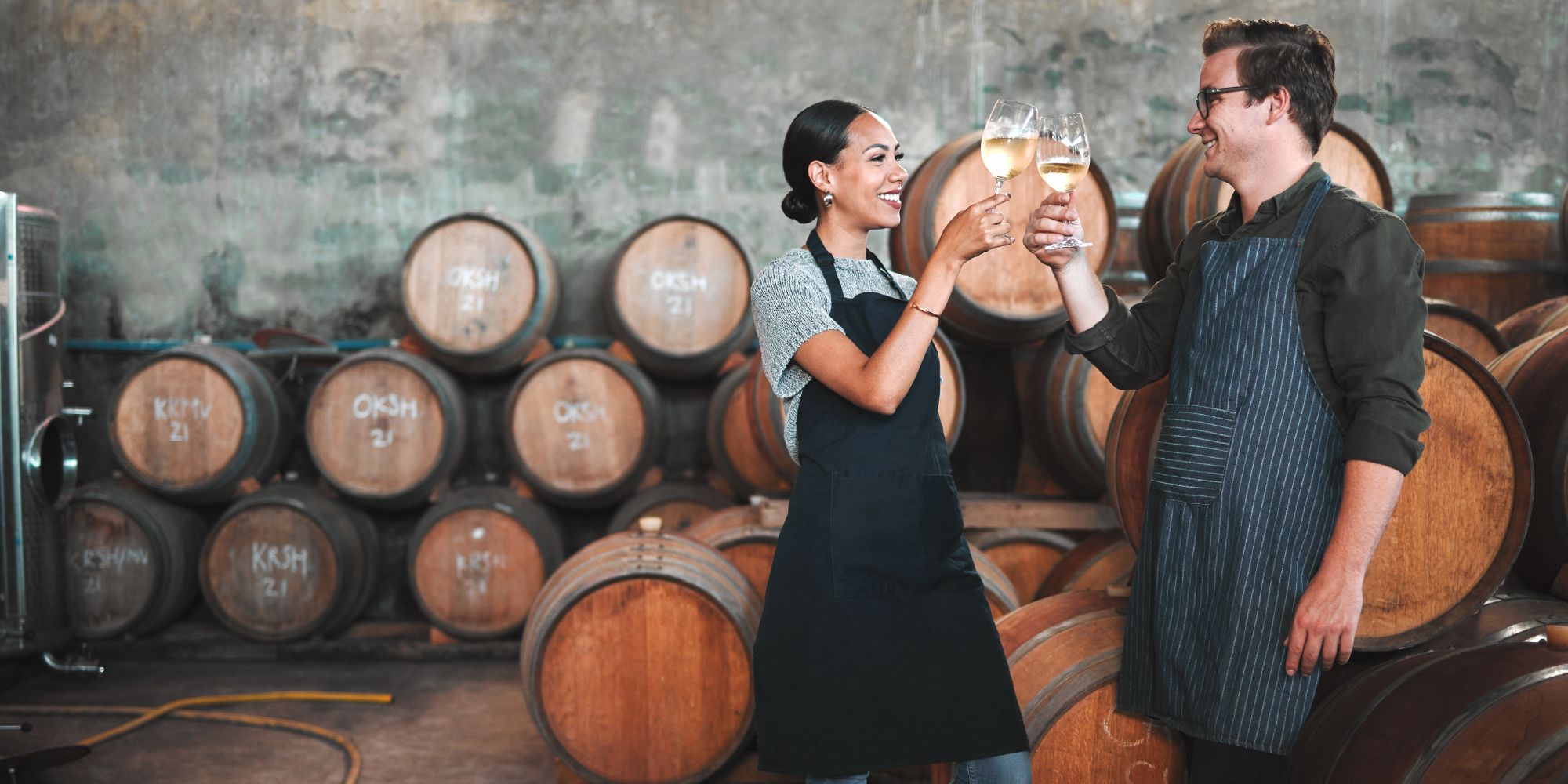The Famous Varieties of White Wines: From Chardonnay to Sauvignon Blanc

Famous Varieties of White Wines
With each sip, the subtle flavours of the white wine Our carry in a world elegance and refinement. But with so many varieties to choose from, how do you know which one will excite your taste buds? In this comprehensive guide, we reveal the subtle charm of the most popular white wine varieties, including Chardonnay and Sauvignon Blanc.
Understanding the different varieties of white wine
The white wine is a diverse and seductive category, offering a wide range of flavours and aromas to suit every palate. From crisp and refreshing to rich and creamy, there is a white wine for every occasion.
Chardonnay and Sauvignon Blanc are two of the most beloved and widely recognized white wine varieties. While both fall under the umbrella of white wine, they both have unique characteristics that set them apart.
The characteristics of Chardonnay
Chardonnay, often referred to as the "queen of white wines", is known for its rich and buttery taste. It is one of the most famous wines in the world. wine with a full body which offers a complex range of flavours, including tropical fruit, vanilla and oak.
One of the key factors that contributes to the distinct flavor profile of Chardonnay is the winemaking process. Chardonnay grapes can be fermented in stainless steel tanks or oak barrels, with each method giving different characteristics to the final product. Stainless steel fermentation tends to produce a fruitier and crisper wine, while oak barrel fermentation adds richness and complexity.
Chardonnay is a versatile wine that pairs well with a wide variety of dishes. Its buttery texture and tropical fruit notes make it an excellent accompaniment to creamy pasta dishes, seafood and poultry. It also pairs beautifully with soft cheeses and can be enjoyed on its own as a wine.
The history and origins of Chardonnay
Chardonnay has a long and historic history dating back centuries. The grape is believed to have originated in the Burgundy region of France, where it has been cultivated since at least the Middle Ages.
Burgundy remains one of the most famous and renowned regions for the production of Chardonnay, known for producing wines of exceptional finesse and complexity. Other notable regions for Chardonnay include California, Australia and New Zealand.
In recent years, there has been a surge of interest in "cool-climate" Chardonnay, which is grown in areas with lower temperatures. These wines tend to be more vibrant and crisp, bringing out the natural acidity of the grape.
Tasting notes and food pairings for Chardonnay
When tasting Chardonnay, you can expect to encounter a wide range of flavours and aromas. On the nose, you can detect notes of tropical fruit, citrus, vanilla and oak. On the palate, the Chardonnay offers a rich and creamy texture, with flavors of ripe apple, pear and melon.
To truly appreciate the nuances of Chardonnay, it is recommended to serve it slightly chilled, around 50-55°F. This allows the flavors to fully develop without being overwhelmed by the cold temperature.
When it comes to food pairings, Chardonnay is incredibly versatile. Its richness and buttery texture make it a great match for creamy pasta dishes like fettuccine Alfredo or lobster mac and cheese. It also pairs well with grilled chicken, grilled seafood and soft cheeses like Brie or Camembert.
Exploring the flavours of Sauvignon Blanc
In stark contrast to the rich and buttery Chardonnay, Sauvignon Blanc delights with its crisp acidity and refreshing aromas. This white wine variety is known for its vibrant flavors of citrus, herbs and green apple, making it a refreshing choice for hot summer days.
Sauvignon Blanc is usually produced in stainless steel tanks to preserve its bright and lively characteristics. This fermentation method allows the grape's natural acidity to shine through, resulting in a light-bodied and refreshing wine.
Methods and areas of production of Sauvignon Blanc
Sauvignon Blanc is produced in various regions around the world, each with its own unique expression of the grape. The most famous region for Sauvignon Blanc is undoubtedly the Marlborough region in New Zealand. Marlborough Sauvignon Blanc is known for its intense aromas of passion fruit, blackcurrant and fresh grass.
Other notable regions for Sauvignon Blanc include the Loire Valley in France, particularly the Sancerre and Pouilly-Fumé sub-regions. These wines tend to be more mineral and elegant, with citrus and flint flavours.
California, Chile and South Africa also produce excellent examples of Sauvignon Blanc, each with their own distinct characteristics and terroir influences.
Sauvignon Blanc and suggestions for food pairing
The lively acidity and herbaceous flavours of Sauvignon Blanc make it ideal for a variety of dishes. Its vibrant citrus notes complement seafood, particularly shellfish such as oysters, prawns and scallops, beautifully. It also pairs well with lighter dishes such as salads, roasted vegetables and goat cheese.
For a refreshing summer couple, try the Sauvignon Blanc with a fresh Caprese salad or a citrus ceviche. The crisp acidity of the wine will reduce the richness of the ingredients, creating a harmonious balance of flavours.
Conclusion: Enlarging your white wine
As you delve into the world of white wine, exploring the flavours of Chardonnay and Sauvignon Blanc is a great place to start. These popular white wine varieties offer a delectable array of flavors and aromas, each with their own unique charm.
Whether you prefer the rich and buttery notes of Chardonnay or the lively acidity of Sauvignon Blanc, there is a white wine out there waiting to capture your taste buds. So pick up your glass and embark on a journey of discovery as you uncover the subtle flavors of these favorite white wine varieties. Cheers!

